Robotic mowers need a boundary wire to keep them from leaving your yard and running amuck. But can you lay the boundary wire under the paving stones of your terrace or sidewalk? And what is the best way to proceed if you can? I’ll explain it to you in this article.
Can the boundary or guide cable of a robotic mower be laid under paving stones? The boundary wire and the guide wire of the robotic mower can be laid under paving stones without any problems. The cable on most models should be buried no deeper than 4 inches so the robotic mower can still reliably register the magnetic field of the cable. On some models the cable can even be laid up to 8 inches deep.
In the next sections I will show you how to lay the cable and what you should pay attention to.
Contents
Can the boundary wire simply be laid under paving stones?
The boundary wire as well as the guide wire can be laid under paving stones without any problems. Under cobblestones, experience has shown that you can lay the cable up to 4 inches deep if it is under cobblestones (as opposed to 8 inches where there are no paving stones overhead.
It is advisable not to lay the cable directly underneath the paving stones, so that the stones rest on the cable. As the stones sink and are walked on over time, they press on the cable and can possibly damage it.
It is better to leave a little bit of space between the paving stones and the cable, so that a certain buffer zone is created. You can fill this with sand or soil, for example.
Even better is to feed the cables through a conduit, such as those used for internet cables and electric wires, before burying it. This way, you can easily repair the cable if it should break. Simply pull the cable out through one end of the pipe, repair it, and push it through again.
If the cable cannot be easily pushed through, there are also “threading aids” available, e.g. retractable spirals or pull-wires that are already in the empty conduit before laying. These function similar to the way a needle pulls thread through a fabric: imagine the conduit as the space between the threads of a fabric’s weave, and the threading aid as the needle that pulls the cable, or thread, through.
The best way to proceed when laying conduit
1. The length of the conduit
Most conduits are usually made of plastic, are flexible and have a kind of groove that gives them additional stability – the latter is also called a corrugated conduit. When you lay the conduit, you should make sure that you get the cable properly pulled through at the end.
It is best if you avoid curves and kinks as much as possible to make pulling the cable through easier. Of course it is also possible to pull cables through heavily twisted, curved conduits, as that’s what conduits are for.
However, the greater the complexity of the cable run, the greater the demands on your craftsmanship and the higher the likelihood you will need to use more advanced “cable pulling” techniques. (I always try to explain things as simply as possible here in this blog, but I don’t want to withhold any solutions, as you will see below).
With these considerations in mind, consider where you want to run the cable under your lawn. The cable should be easy to pull through at the end.
With stiff pipes, such as PVC, you don’t have to worry about these considerations, of course, so if you’re using stiff piping, just go straight ahead.
2. Removing the paving stones
Now, how do you remove your paving stones or bricks? As they say, “Everything is always harder in the beginning.” This is especially true here, depending on the construction of your paving, as pulling the first stone may not be so easy. There are so-called “paver pullers”, “paver lifters” or “paver extractors” you can find at the hardware store. With grouted paths, you usually need to use a grout removing tool or something similar.
You can also try removing pavers with long L-shaped hooks. Push them in at the joints, turn the hooks so that they grip under the paving stone and pull the whole thing up. Once you have the first stone out, the rest is much easier.
When taking the stones out, it is best to lay them out exactly as they were placed in the path, so that you can remember where each individual stone was- especially if your path uses more than one type of paver/brick or is laid in a design or pattern. That way you can make sure that everything fits together again in the end.
3. Adding a buffer between the paving stones and empty conduit
You should not lay the empty conduit directly under the paving stones, but with a little buffer in between. Under the bricks you will probably find different layers of sand and/or small pebbles, which make up the “base” of the path. You can bury the empty pipe in this base, so that a there is a layer of base material between the conduit and the paving stones or bricks.
It is important to have this buffer between the conduit and the pavers because the paving stones can sink over time and compress the hollow, malleable pipe. This can make it difficult or even impossible to pull a cable through afterwards.
If you are using a pipe made from a solid material, having a buffer is not so important- just make sure the top of the pipe is at least flush with the ground, if not deeper, to ensure it does not disrupt the paving stones lying flat.
4. Test it first
Before you do all the paving, you should test to see if you can get the cable through well.
You have these possibilities to pull the cable through:
- Buy an empty conduit with an integrated pull wire
- Use a homemade drawstring, or pull wire (best before laying the pipe, see video)
- With a retractable spiral (with this you push the cable through)
The following video shows a good method for pulling a homemade drawstring through an empty conduit yourself, if your conduit does not already have a pull wire.
If you are able to get your homemade drawstring through the pipe successfully, you may go ahead and bury the pipe. Now you know that you will be able to get the boundary wire or guide wire through easily, using the drawstring already in place.
5. Replace the paving stones
Before you put the paving stones back in place, it might make sense to check if everything is okay with the cables or if something was broken when threading them through the pipes. This is rather unlikely, but it’s best to check before you re-lay your entire path, just in case.
Then you can put the paving stones back in place and grout them if need be. If you want to grout the pavers or bricks, here is a short tutorial from pavingexpert.com.
Which conduit should I use?
You can simply use a classic corrugated tube. This is what they look like:
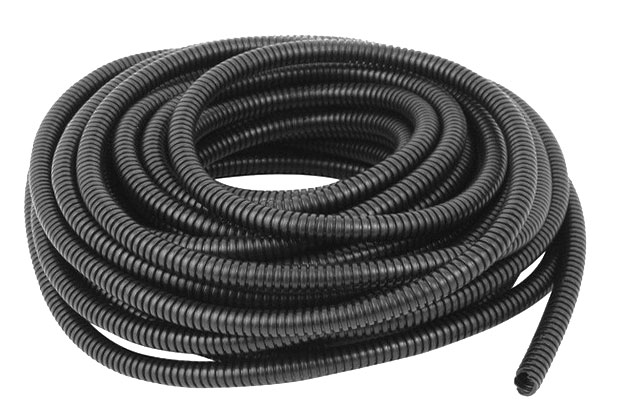
Any other pipe with sufficient diameter can of course also be used.
However, the pipe must not be made of metal! Metal interferes with the signals of the boundary wire or guide wire. The mowing robot then no longer locates the cable correctly.
However, other rigid pipes made of PVC, rubber or similar materials can be used without problem.
I don’t want to go all in and bury the cable under my walkway. Are there alternatives?
Laying cables in the joints
I have seen owners of robotic mowers who simply laid or wanted to lay their boundary and guide wires in the gaps between their paving stones, before they were advised against it.
I’m not a fan of such half-baked solutions myself and would like to advise you to defeat your inner bastard and rip the band-aid off instead. In the long run, this will work out best, which I will explain below.
The only exception: The layout of your bricks/paving stones allows the cables to lie in a straight line.
However, this is often not the case. When laying the cable in the gaps, the cable must often be laid in a zigzag pattern and you will end up with many right-angled corners in the cable, which the robotic mower now has to follow to drive back on this twisty journey. This can take quite a lot of time, because mowing robots become particularly slow when driving along a cable at corners. It also wastes a lot of wire when compared to using a straight line.
For mowing robots with a guide wire, you can switch off the search for the way back via the boundary wire, but then at least the guide wire should lead in a straight line to the charging station instead of unnecessarily lengthening the path with several angular serpentines.
I’m not saying that it can’t work to lay the cables in the gaps, it’s just that in the long run you probably won’t enjoy it.
Hire a company to lay the cable
If you don’t want to experiment with laying the cable in the gaps because it’s just not a great solution and you don’t want to do the work, you can of course simply hire a landscaping company, for example, to lay an empty pipe under the paving and run the cable through it. This will of course cost a bit.
Is there not another solution?
If you don’t like all previous solutions for laying the cable under the pavement, you will probably just have to lay it over the pavement, unless you can build a rocket that shoots horizontally through the soil, which is probably not feasible or advisable, either.
Related questions
Can several cables be laid through an empty conduit? Only one cable may be laid through a pipe at a time. If you lay the boundary wire in different directions through the pipe, the magnetic field and thus the signal is cancelled out. The guide wire must not be laid in the same pipe as the boundary wire.
Can the charging station for the robotic mower be placed outside the lawn? The Charging Station for your robotic mower can also be placed outside the lawn. However, this is associated with a number of problems, some of which can be remedied and some of which have to be accepted. In this article I have described how you can install the Charging Station outside the lawn.
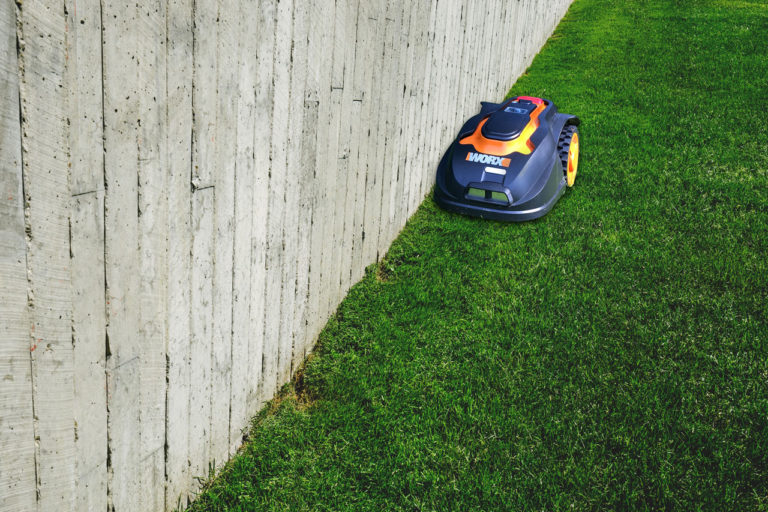
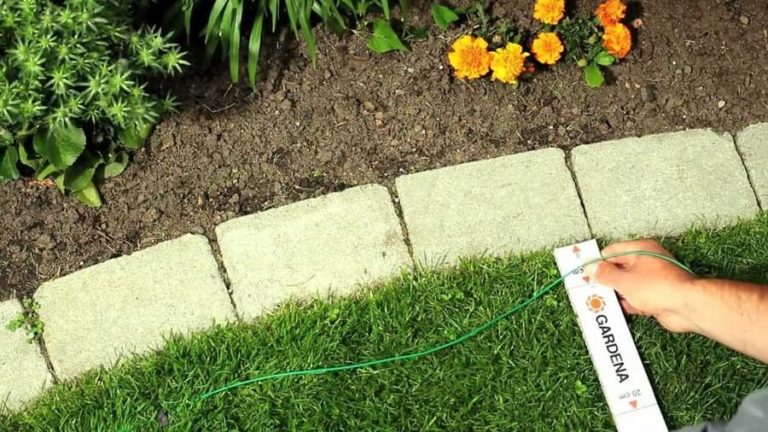
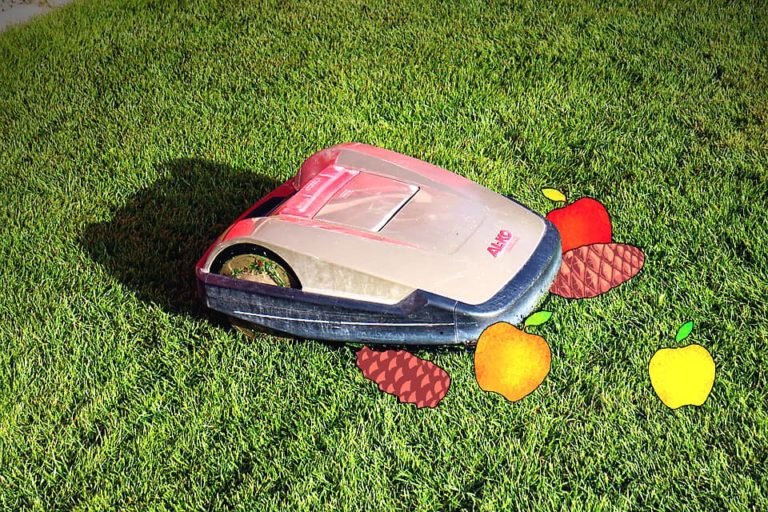
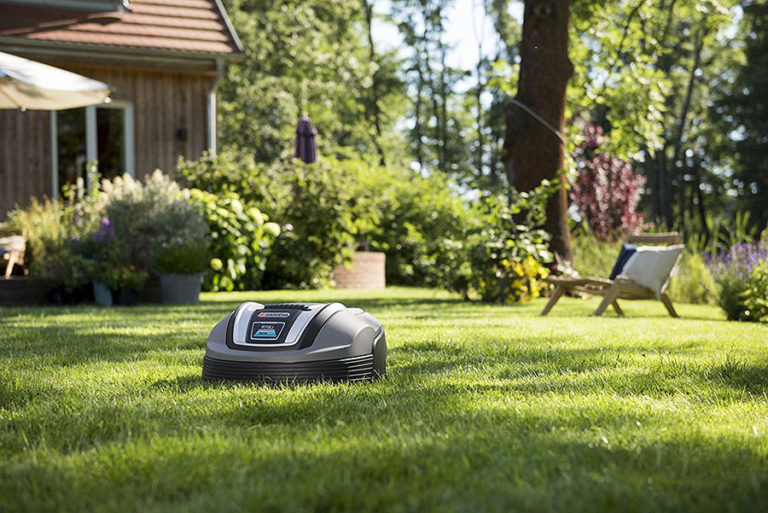
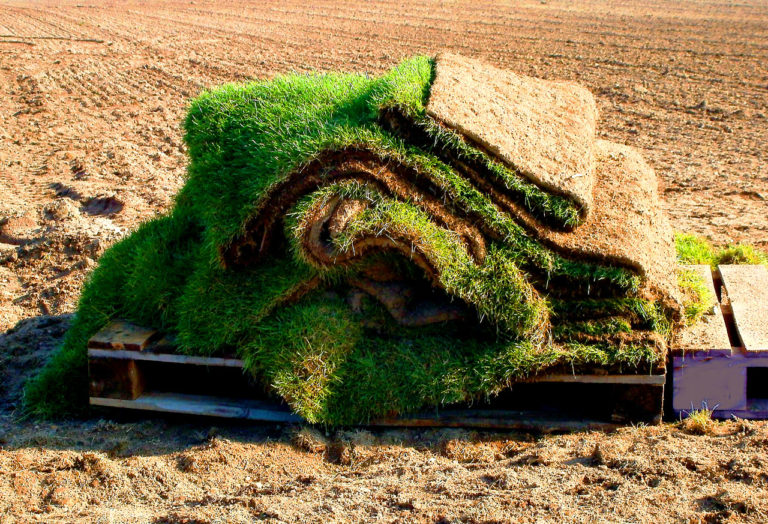
As I don’t want to lift my paving slabs to bury the perimeter wire could I make a straight line 2mm deep gully along the path using a grinder insert the wire into it and cover it with a sort of clear resin I don’t know how thick the perimeter wire is so my 2mm deep gully might have to be deeper I was hoping you could help me with this?